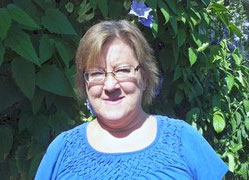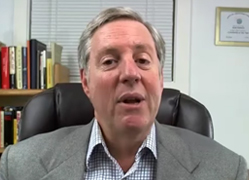 Combination Therapy in Treating Nail Fungal Infections
Combination Therapy in Treating Nail Fungal Infections
Table of Contents
Onychomycosis Introduction: Causes and Symptoms
That white or yellowish dot under your nail may not be as innocuous as you think. It may be the start of onychomycosis, or nail fungal infection.
Nail fungi infections are typically caused by dermatophyte fungi or Candida, depending on the region. Dermatophytes are most commonly responsible for fungi infection in temperate Western countries, while Candida yeasts are more prevalent causes of onychomycosis in tropics and subtropics countries.
The dermatological condition begins as a white or yellow spot under the nail. It may affect the toenail or fingernail, including the skin underneath and surrounding it. It may be painless or can cause discomfort to the sufferer. Nails that have fungi infection are usually brittle and thicker than normal. They are also discolored, with some looking opaque white, yellowish, or even greenish. They may even have crumbled edges and a powdery feel. In worst cases, the entire nail may detach from the nail bed.
Treating Nail Fungal Infections with Combination Therapy
Nail fungal infections require regular and lengthy treatment because fungi tend to come back. To make the treatment doubly effective and faster, some physicians recommend combination therapy in treating nail fungal infections. But what exactly is combination therapy?
Simply put, combination therapy is the use of multiple medications or therapies to fight the same condition. It can mean a variety of combinations, such as oral drugs and topical ointments, or medical therapies and psychological therapies. It is a more preferred approach than monotherapy, or the use of one medication, as the latter may not always produce desired results.
Each treatment must be an approved method by an official drug agency of a country—the Food and Drug Administration (FDA) in the US—in order to be effective and safe. If the medications, or even one of the medications, are not FDA-approved, the results of the treatment would not be as successful or would even be dangerous to the patient’s health.
In treating nail fungal infection, combination therapy is usually recommended and preferred to increase the cure rate. As fungi are notoriously difficult to get rid of and are likely to return, combination therapy of topical medications and other forms of treatments would decrease the chance of prolonged treatment.
The topical treatment to be used in conjunction with other treatments must be effective and safe to be used by itself alone though. Otherwise, it could not only impede the recuperation period, it could also aggravate the condition. A solution with 10% undecylenic acid with a nail-penetrating agent (usually an essential oil) could effectively get rid of the fungi infection.
Here are different combination therapies in treating onychomycosis:
Surgery with Topical Treatment Combination Therapy
The surgical removal of the nail is rarely advised by physicians, but it is an effective treatment of severe cases of nail fungi infection. In this treatment, the infected nail is removed, allowing a new and healthy nail to grow in its place. The new nail will take months to a year to grow back completely. During the recovery period, the fungus will possibly reappear, triggering the return of the infection as well.
Hence, while the nail is growing back, it is usually recommended to apply topical ointment on the nail bed. This would prevent the recurrence of the fungus.
Laser with Topical Treatment Combination Therapy
Laser therapy as treatment for dermatological concerns is nothing new; it has been around for years. However, its application to nail fungus infection is relatively new. The studies based on this treatment are not conclusive. Hence, there are varying opinions of experts on the effectiveness of laser treatment on onychomycosis.
This treatment works by causing photo damage and/or ablation of the fungus through infrared light or through a single wavelength of light, depending on the type of laser. According to earlier studies, both had shown high efficiency rate. The idea of the treatment is for the laser light to kill the pathogen, or the fungi, or other microorganism that cause the infection, without harming the nail or the surrounding skin by passing through the nail.
It’s a repeated process that is done within weeks. In between treatments, some nail fungus infection sufferers opt to apply topical creams to the affected nails in a bid to maximize the efficacy of the treatment, as well as speed up the healing process.
Oral and Topical Medicine Combination Therapy
Oral treatments, or also called systemic medications, are more popularly used for moderate to severe cases of onychomycosis. These are recommended to be taken regularly in a prescribed period of time, usually for several months. Oral medicines are generally very effective anti-fungal treatments but also have the most side effects and restrictions. There are people who cannot take oral anti-fungal medicines because of the risks involved. These people include the elderly and those who are taking other medications that could clash with the anti-fungal treatment.
To decrease the side effects of oral medicines, as well as increase the rate of effectiveness, topical treatments may also be applied to the infected nail and surrounding skin. A combination of topical and oral treatments is believed to increase the healing rate of the fungi infection.
Conclusion
We may not be conscious of it, but we apply combination therapy in almost every health conditions that we are trying to cure. If we have a headache, we take an oral pain reliever and take a rest at the same time. Those two treatments—medical and non-medical—taken and applied together allow us to recuperate faster.
The same technique is applied to treating nail fungus infections as well. Although there are several treatment options available, people tend to apply two or more therapies at the same time to increase the effectiveness of the treatments and speed up the healing process. The practice of using combination therapy in treating nail fungal infections also prevents the fungus from coming back, which is a major concern as onychomycosis has a tendency to recur even after effective treatment.










